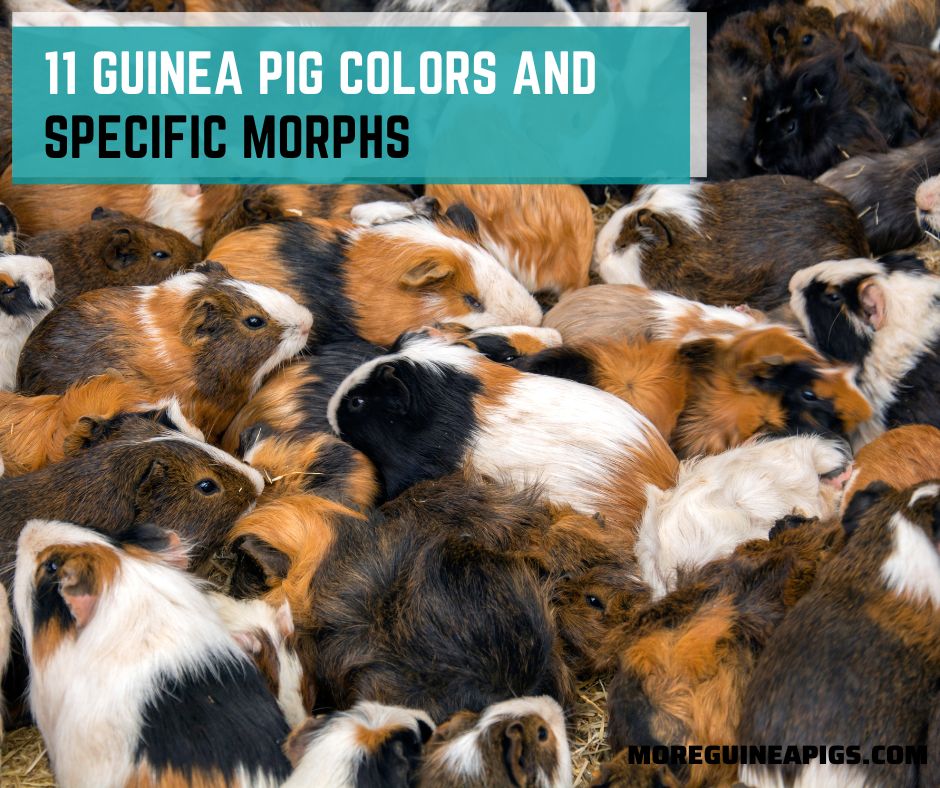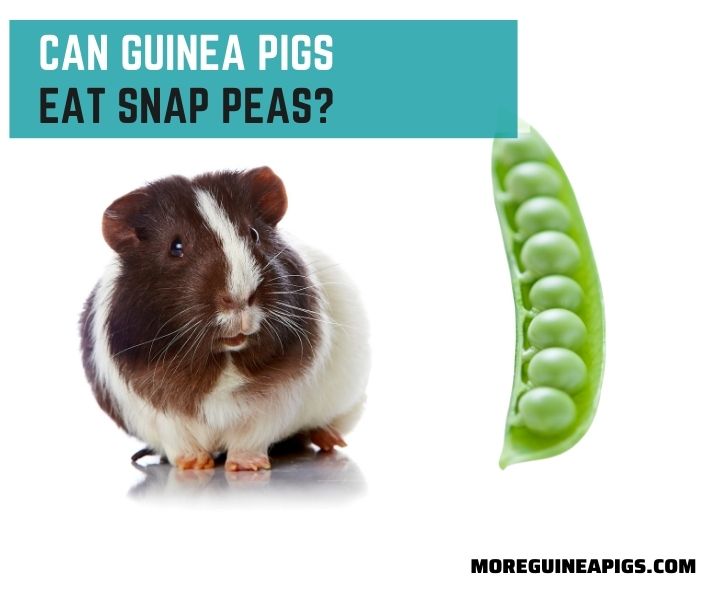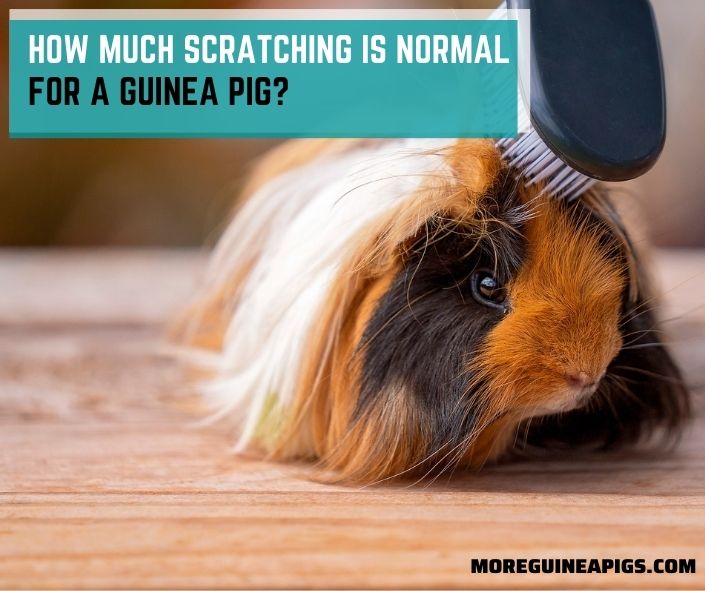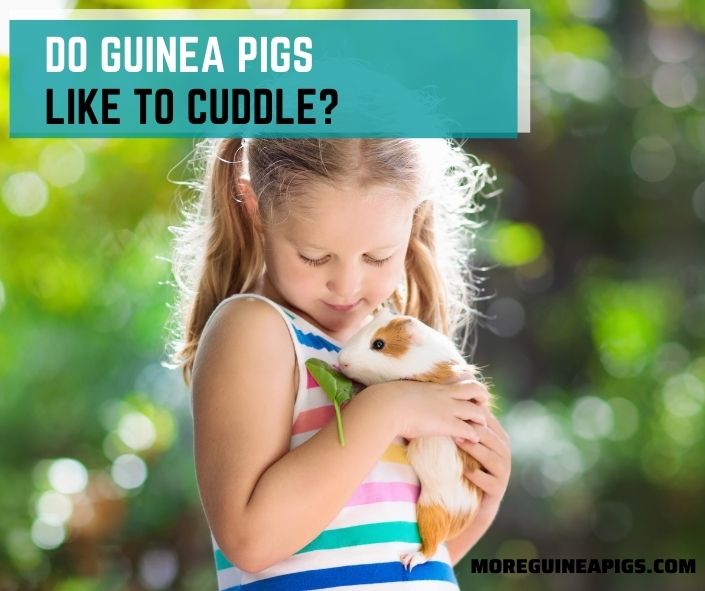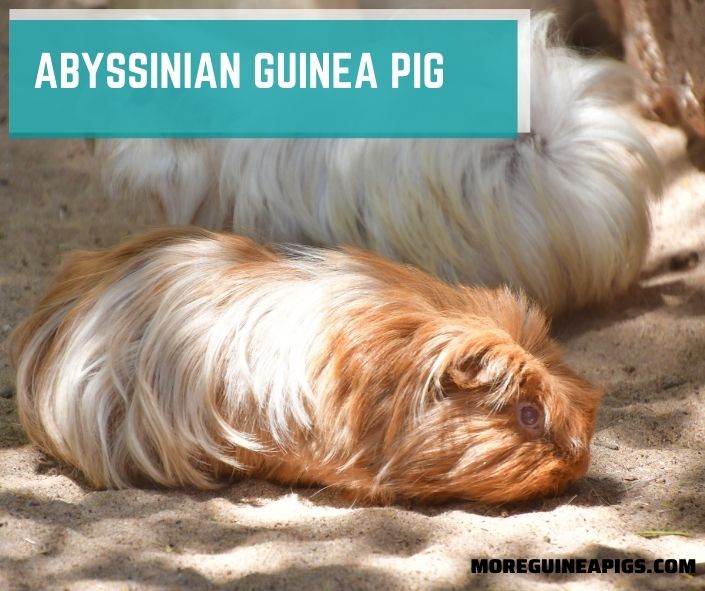11 Guinea Pig Colors And Specific Morphs
At least you are conversant with the idea of color variation in humankind as we manifest it so well. Likewise, the range of guinea pig colors is quite astonishing; they demonstrate a myriad of coat colors, lengths, and patterns.
After all, their outward appearance variation makes them distinctive and unique creatures. Their captivating beauty makes us love them and stimulate us to own them as our animal companions.
Guinea pigs can come in a single solid color or a pattern of different colors. You have the freedom to choose the color that inspires you most.
This article covers the 12 color variations you are likely to find in guinea pigs. Read through to familiarize yourself with the wonderful colors of these furry pets.
What Are the Colors of Guinea Pigs?
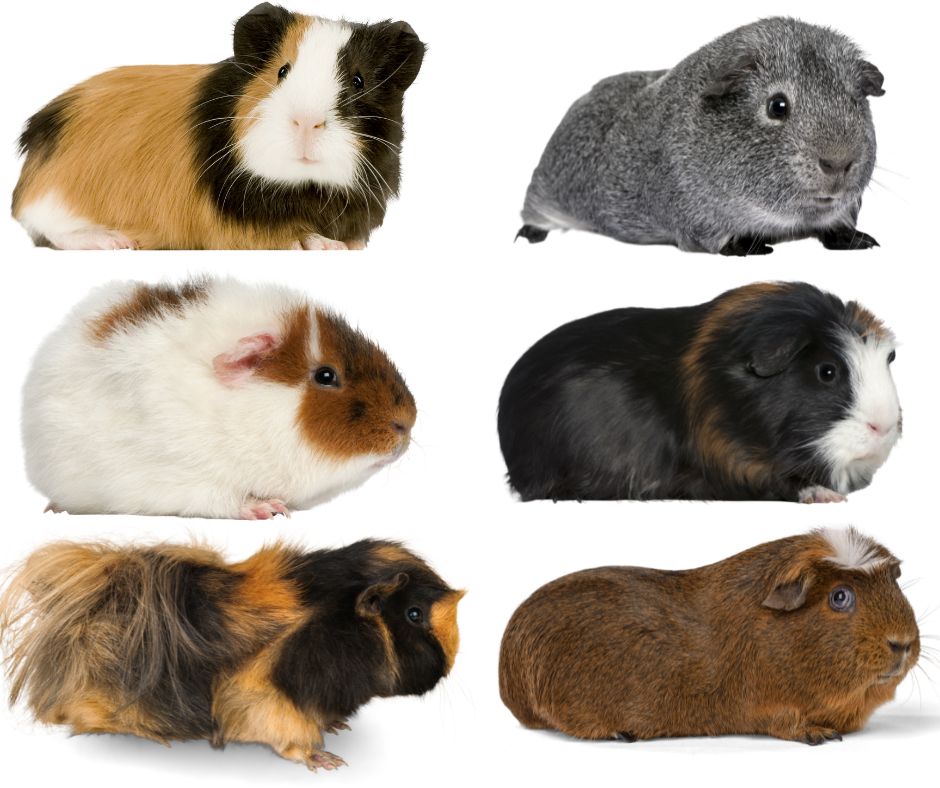
Have you been living under a rock? If not, you know that guinea pigs demonstrate many more colors than cream and black.
Genetics is the foundation for the colors we see in guinea pigs. Ideally, the father and the mother genes dictate the coloring of the offspring (phenotypic). For simplicity, a phenotype is another word for the appearance of a guinea pig.
Dominant traits manifest more, influencing everything in guinea pigs, including the coat color, eye color, and coat length.
Guinea pigs have many colors, from black, cream, white, red, chocolate, buff, golden, beige, lilac, and slate. But in general, the colors narrow down to form four basic groups, as described below.
Uniformly of One Color
Some guinea pigs have uniformity of one color across their bodies. The coloring of their eyes will mostly tally with their coat color. Such guinea pigs are common, and this type of coloring is what we call “self.”
For instance, if your cavy is all cream, he would be called a self-cream guinea pig. Another thing, self-black guinea pigs will always inherit black eyes since black is a dominant trait established in the piggies with self-black coverings.
Mono-Colored guinea pigs come in 12 different colors, although cream, lilac, chocolate, beige, black are most common. The selfs lack any pattern, and it’s a common trait in short-haired guinea pigs.
Regarding eye coloration, the self-chocolate piggies usually have brown eyes, and beige ones possess pink eyes.
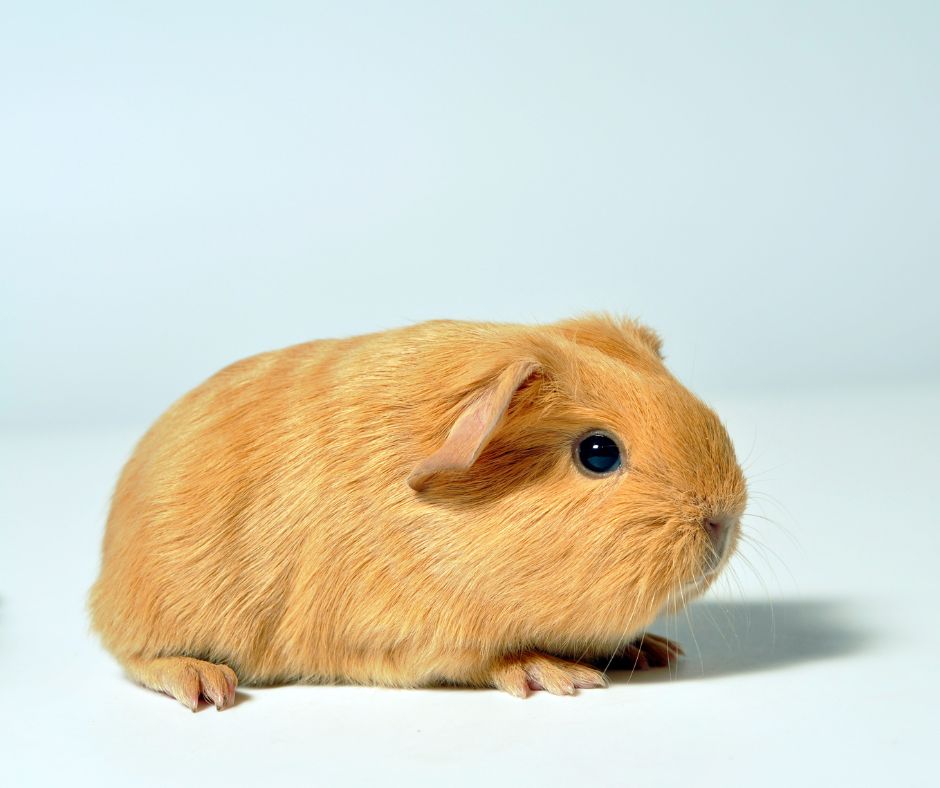
Bicolor
The prefix “bi” represents two. Therefore, bicolor guinea pigs bear two colors distributed in patches across their bodies.
A true bicolor guinea pig exhibits two-colored square patches showing minimal overlap and brindling. The patches usually manifest on either side of the piggy’s back instead of running in the middle or on the extreme edges.
The patches can bear almost any color, with the most typical colors being black and red. Bicolor guinea pigs bearing black and red are called Tortoiseshell.
Multicolored ‘ticked’ Coats
The prefix “multi,” as the name suggests, means many. Consequently, multicolored/ticked guinea pigs exhibit multiple colors.
Unlike their bicolor counterparts, multicolored guinea pigs are seen with more coat colors. Their coats are incredibly beautiful and make each guinea pig unique since no two-color patterns are the same.
To put it more simply, ticking is a type of hair coloration where each hair bears two or more bands of pigmentation. The undercoat reflects a specific color, and the hair tip has a distinctive coloration (ticking pattern).
The pig may bear several hair colors, but variation is present in each hair strand. For instance, Argente guinea pigs may have an undercoat color of beige or lilac, with a gold, white, or lemon ticking.
Some breeds are fully ticked, while some exhibit a ticking pattern in specific body parts, e.g., stomach, face, back, or limbs.
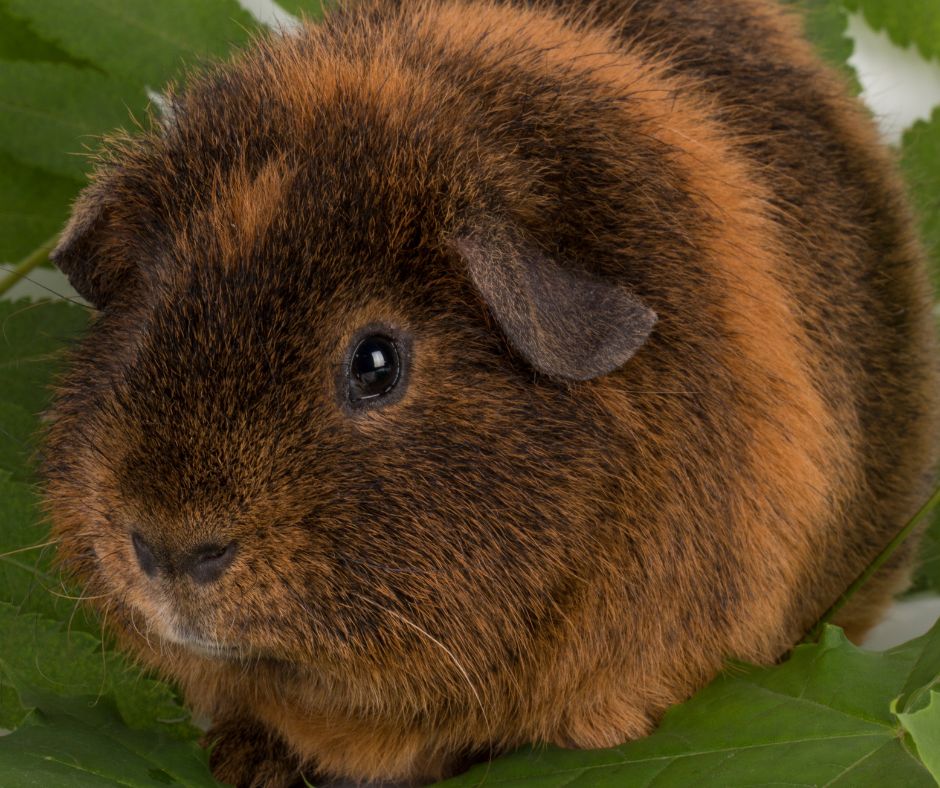
Mixtures of Colors
Guinea pigs with a mixture of colors do not follow a specific pattern but are randomly spaced.
The species in this category have different colors, ranging from red, black, white, chocolate, etc. The patches will be random throughout the body.
The pigs have a smooth coat of fur, and the coat color will be neatly separated, not intermingled like the breeds with a ticking coat coloration.
11 Guinea Pig Colors And Specific Morphs
Do not scratch your head too much, thinking what a morph is. Morph describes the general appearance of a guinea pig regarding its body conformation, size, coat color, and length.
A morph influences the coat color, but morph is not really a color. Don’t be confused when you see people using these two terms interchangeably. Each term has its specific meaning.
There exists a multiform color of guinea pigs. Here, we will have an in-depth exploration of these colors and the 11-guinea pig-specific morphs.
Self-Guinea Pigs

Self-guinea pigs are easy to spot since their coat in the entire body is monocolored. Most pet keepers own this type of breed. Their smooth and straight coat makes them adorable.
Typically, the self-black pigs have black eyes, but other breeds in this category may possess pink or brown eyes, etc., depending on the coat color. Examples of self-colored guinea pigs include:
- Buff guinea pigs
- Cream guinea pigs
- Chocolate guinea pigs
- Beige guinea pigs
- White guinea pigs
- Golden guinea pigs
- Red guinea pigs
- Slate guinea pigs
- Black guinea pigs
- Lilac guinea pigs
- Saffron guinea pigs
YUEPET Guinea Pig Bed Cuddle Cave Warm Fleece Cozy House Bedding Sleeping Cushion Cage
Agouti Guinea Pigs
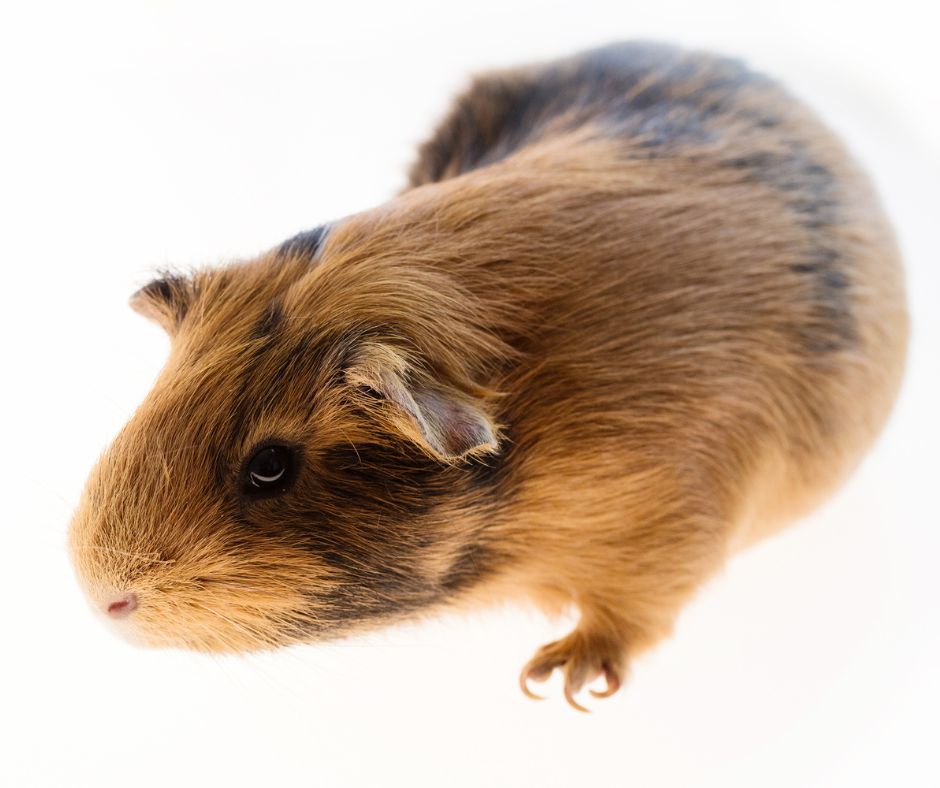
The agouti guinea pigs are more discernible due to their agouti ticking trait. They display two different ticking coat colorations alternating around the head, back, and legs.
However, the stomach and areas around the eyes have one color. Agouti piggies are pretty friendly and best for starters. Agouti guinea pigs come with six different color variations, including:
- Chocolate agouti pig (with deep chocolate undercoat and orange ticking)
- Lemon agouti (has deep black undercoat with lemon ticking)
- A cream agouti guinea pig (with deep chocolate hair and cream ticking)
- A golden agouti (have deep black undercoat with golden ticking)
- A silver agouti (possesses deep black hair and silver ticking)
- Cinnamon agouti (deep cinnamon undercoat and silver ticking)
Note that the rarest breed of solid agouti has a ticking pattern all-round the body. They are not that easy to find.
Argente Guinea Pigs
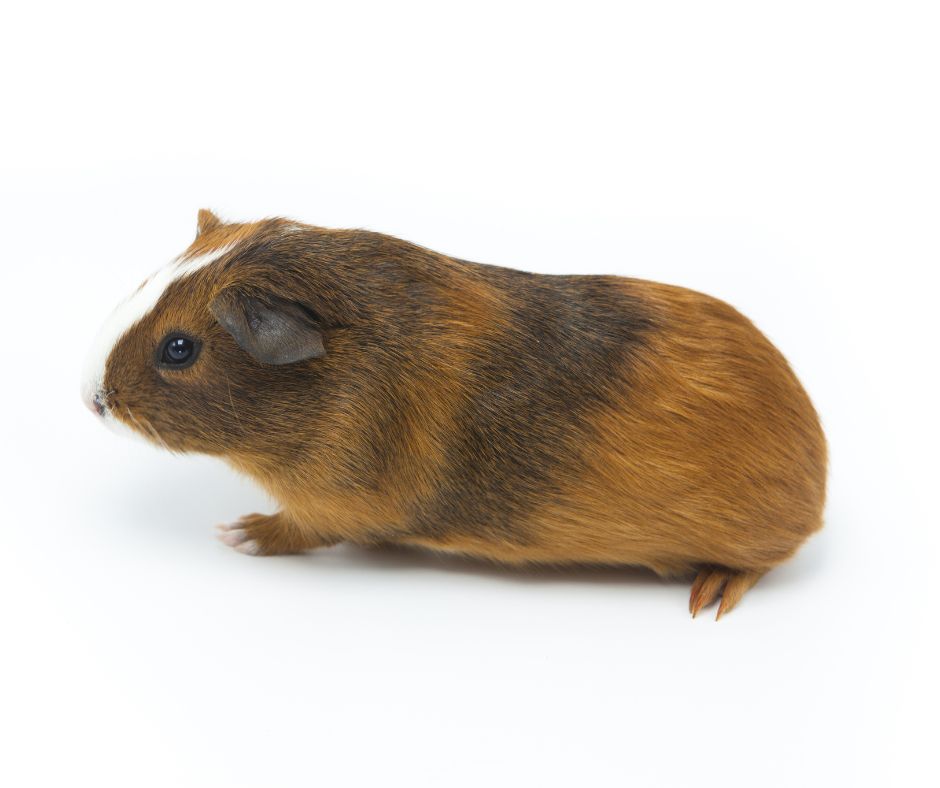
Argente cavies have ticking coloration over most of their bodies, excluding the belly. The belly color, although not ticked, resembles the ticking color (color on the tip of each hair).
This morph mostly has pink eyes, and its coat is short and soft. The ticking markings come in two shades. It’s easy to confuse an argente cavy with agoutis since they strongly resemble each other.
However, the pink eyes of the argentes are what brings the difference. Argente morphs bear a myriad of acceptable coat colors, including;
- Golden/lilac
- It bears a deep lilac undercoat and golden ticking.
- Have pink eyes and a golden belly.
- White/lilac
- Possess a deep lilac base coat with white ticking
- Eyes are pink and the belly white
- Lemon/lilac
- Have a deep lilac base coat with lemon ticking
- The belly is lemon, and the eyes are pink.
- Golden/beige
- Deep beige undercoat and golden ticking
- A golden belly and pink eyes
- Lemon/beige
- Exhibit a deep beige base coat with lemon ticking
- Lemon belly and pink eyes
- White/beige
- A deep beige undercoat and white ticking
- White belly with pink eyes
Brindle Guinea Pigs
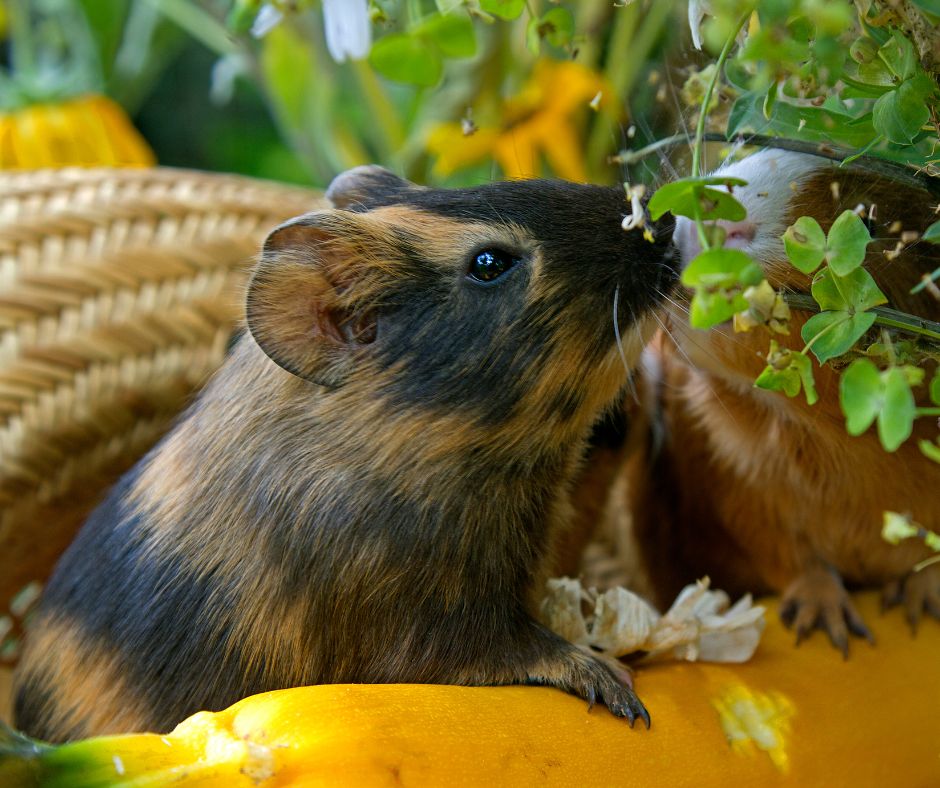
The brindle cavies look more like tortoiseshells in coloration, but they have a mixture of colors instead of square patches of color.
This morph displays a light and solid coloring with darker bands running across the body. The brindle guinea pigs come with different combinations of colors, but a honey-brown coloring with black banding is most common.
Roan and Dalmatian
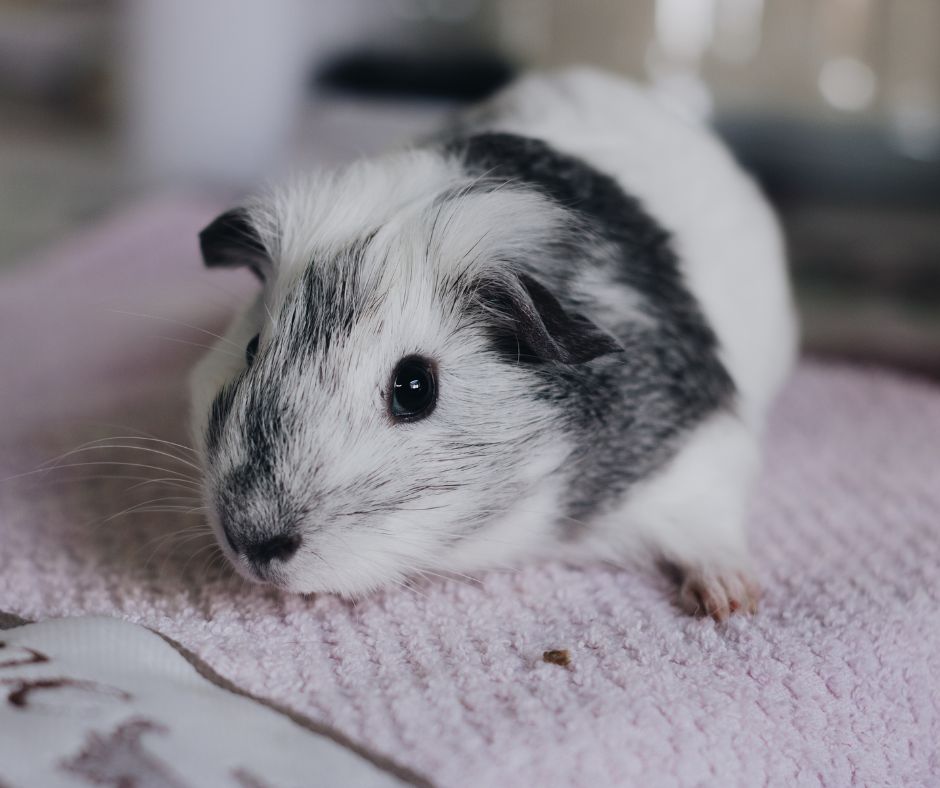
The roan and dalmatian are color varieties in the cavies. It’s advised not to breed dalmatian piggies or roan guinea pigs since both carry a certain gene with a 25% chance of producing malformed young ones.
The roan cavies are bicolored but lack patches. They have white hairs mixed evenly with the dominant color and maybe colored all over the body except the face and feet.
The roan cavies may display a wide variety of colors and coat types. Moreover, dalmatian cavies have two colors, whereby one color is always white. This breed has spots throughout their bodies.
However, the face is non-white and spotless, with only a few animals showing a white streak of fur running from the forehead to the top of their nose.
Dutch pattern
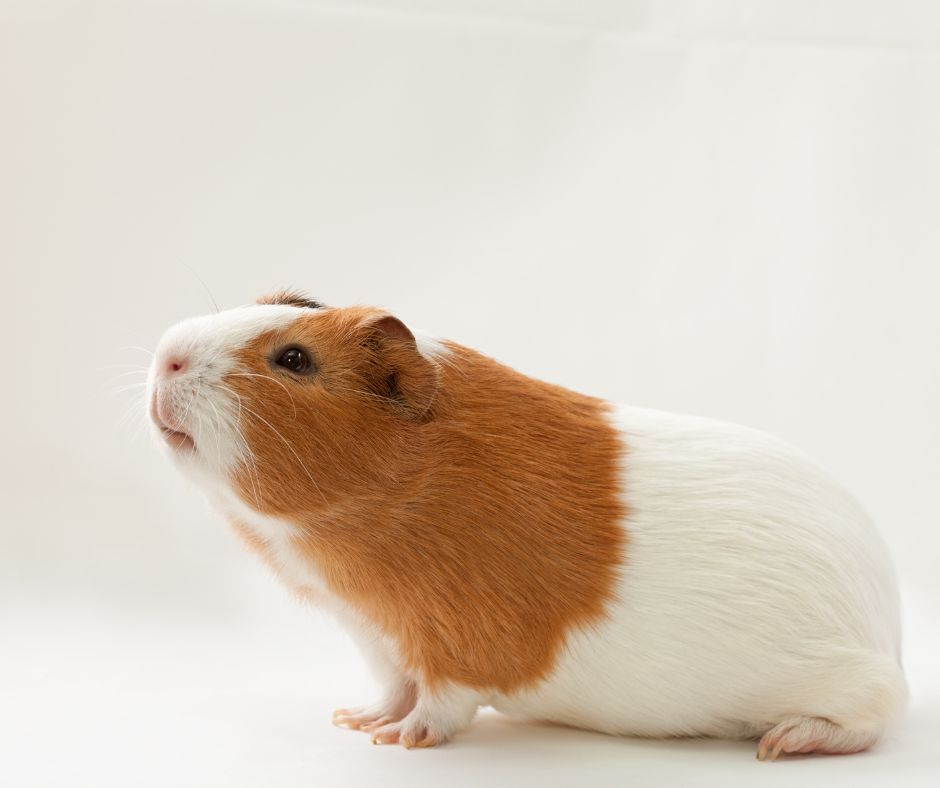
A dutch guinea pig bears a specific white pattern; a white band towards the front and a blaze on the face. The white band around the neck plus white front legs makes them distinctive and distinguishable.
This morph spots many colors and can be mono-colored or multicolored. The multicolored are those with a white band around the neck and front feet, while the rear and lower stomachs come in different colors.
The face and stomach should have the same color, with a white triangle around the muzzle and running towards the top of the head.
Otter and fox
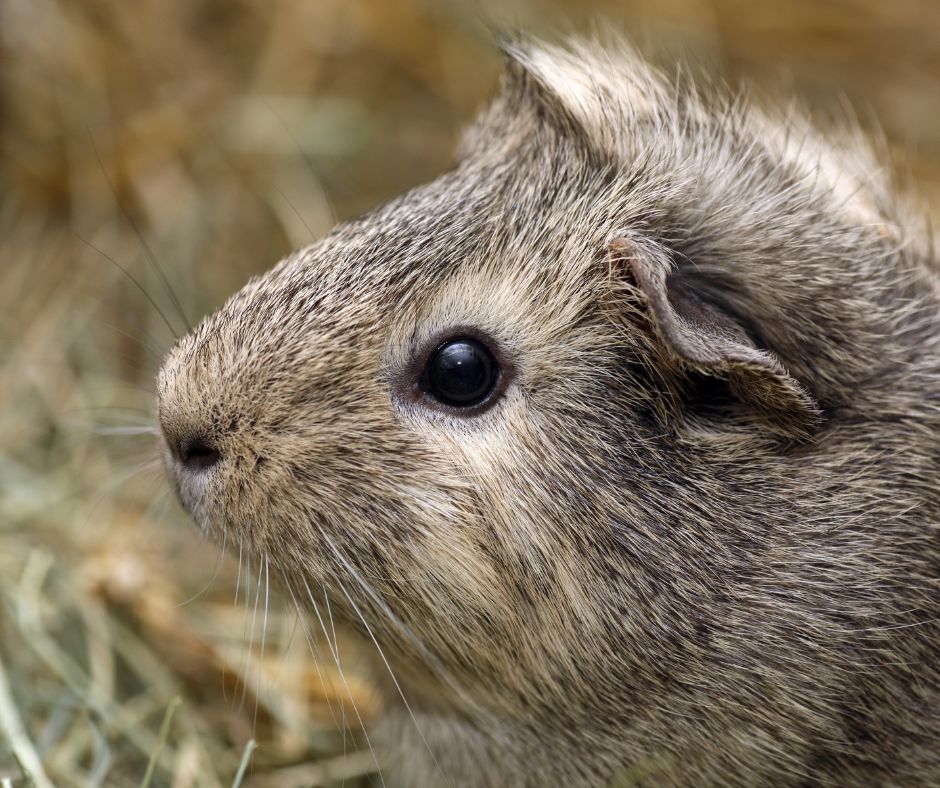
Otter cavies have yellow ticking while fox cavies come with white ticking; that’s the main distinguishing feature between the two.
Fox piggies are easy to spot due to their pale spots around their eyes, chest, and stomach, with flecks of white ticking on various spots across the body.
Aside from that, however, these cavies typically have one solid color that may range from chocolate, lilac, beige, or black.
Otter cavies show different colors, with the most common being black, lilac, and tan, accompanied by yellow ticking.
Himalayan pattern
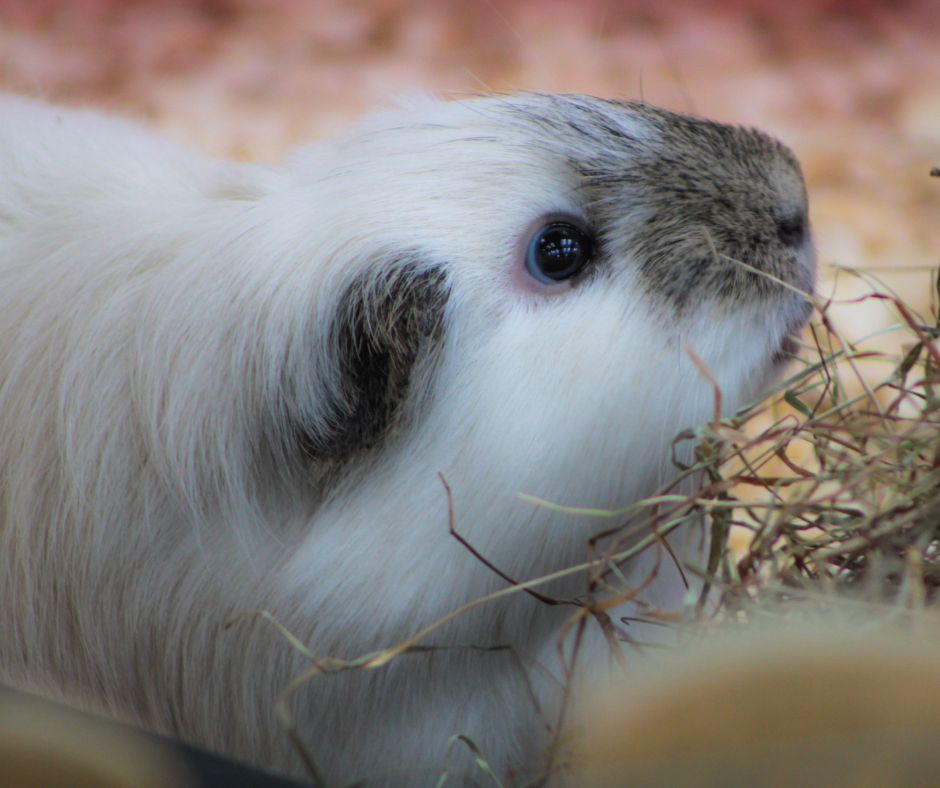
Himalayans are the albino variety of cavies and are predominantly white with darker highlights on the nose, ears, and feet. These parts are typically black or brown.
These pigs are born white, and the extremities’ color develops until they are a couple of months old. Their eyes are bold and pink.
Tan pattern
The tan cavies have a single solid undercoat color, usually beige, black, or lilac, accompanied by tan spots.
The tan markings are typically around the eyes, muzzles, and belly; they look more or less like fox piggies. The tan piggies may also have tan spots around their ears.
2 Pieces Guinea Pig Hamster Hanging Hammock and Warm Bed Soft Mat
Tortoise and White
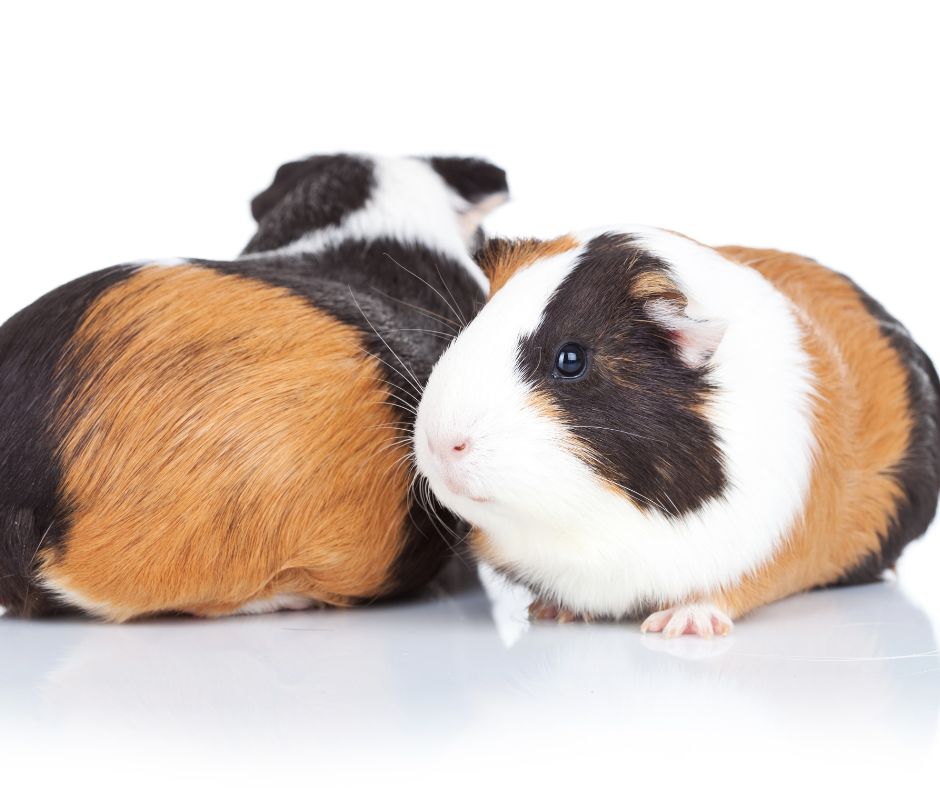
Tortoise and white cavies are a real beauty, and they’re in favor of many people. They have an incredibly elegant coat consisting of white, black, and red, and the colors are neatly separated from each other.
They have a mixture of colors that are neatly separate from each other. Cavies with neatly arranged colors and roughly the same size are best for shows. Note that the coat color, black, red, or white, can appear anywhere.
Tortoiseshell
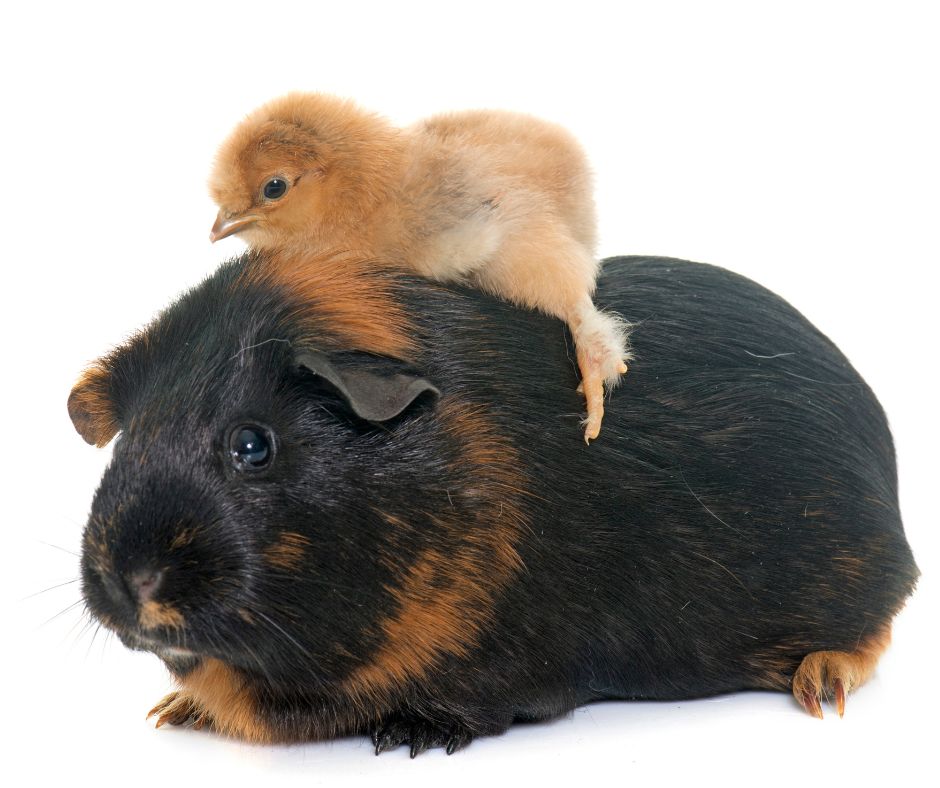
Tortoiseshells have a mixture of many colors and are all uniquely marked. They have red and black patches, with bright dark eyes. Tortoiseshell cavies are remarkably adorable, and many pet owners covet them.
What Is the Most Popular Guinea Pig Color?
The self guinea pigs bear more unique colors that you can easily notice. These cavies are incredibly popular, and many people own them.
Their colors vary from lilac, black, chocolate, golden, red, cream, beige, buff, white, slate, and saffron. However, the most common colors are cream, beige, black, red, gold, white, and lilac.
Each of these cavy colors has its specific name to describe it. For instance, the cream guinea pigs are all cream, black cavies, are all black, and the list goes on.
What Is the Rarest Guinea Pig Color?
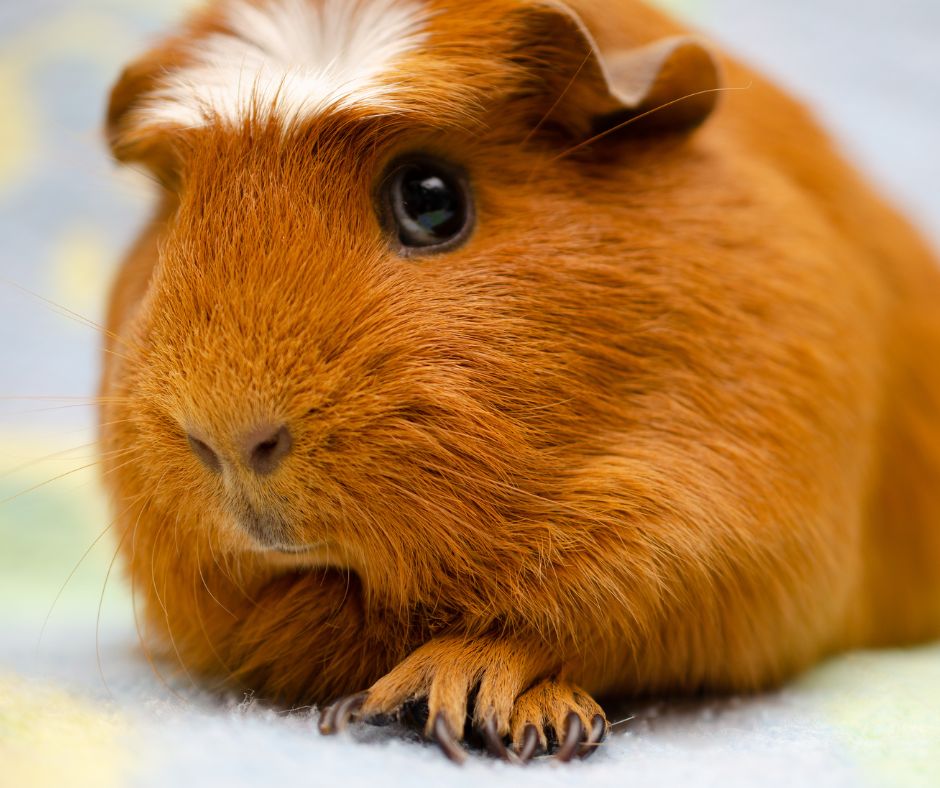
Despite many people hearing about them, some guinea pig colors are pretty rare to find. With that in mind, the rarest guinea pig color is the white-crested pattern.
The white-crested cavies are self-colored, with a single hair tone all over the body, usually black or honey-brown.
However, these guinea pigs feature a white tuft or crest of hair located on top of the head. Moreover, dalmatian patterns are also rare.
Nonetheless, guinea pig classification through coat colors and patterns is one way to categorize these cavies. We can also sort them through their breeds.
Read more: English Crested Guinea Pig: Origin, Appearance and Other Facts
FAQs
How many colors of guinea pigs are there?
The color of guinea pigs that we are most likely to see are 12, but there is more than that. Some colors are popular and others very rare. However, breeders are familiar with most colors.
Is a black guinea pig rare?
No, black guinea pigs are not rare. They are all over, and many caretakers have them as their animal companions.
Are white guinea pigs rare?
Although not that popular like cream, red, or lilac cavies, white guinea pigs are not rare. A good number of people own them.
What do red eyes on a guinea pig mean?
Some guinea pig breeds have red eyes, a normal trait, although such cavies are rare. However, in most cases, red-eye in guinea pigs is a sign of an illness and can typically occur due to bacterial infection.
What are good guinea pig names?
Guinea pigs understand and recognize their names, although it can take time. Getting a sweet and cute name for a cavy is a task that many caretakers don’t escape.
You can call your cavy through its color, for instance, creamie, brownie, chocolate, lilac, beige, etc. The names are suitable for both male and female guinea pigs.
Wrapping Up
The list of guinea pig colors is endless, and some colors are more popular than others. Some guinea pigs have a single tone of color, while some come with a mixture of colors.
The variation of colors in these animals makes them unique and adorable. At least you have many options to choose the cavy that interests you most.
Now, can you tell your guinea pig belongs to which breed or has which color pattern? I hope it’s a yes.
